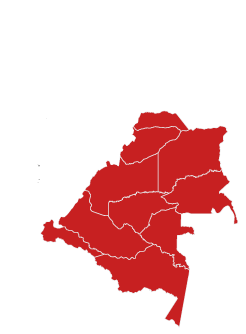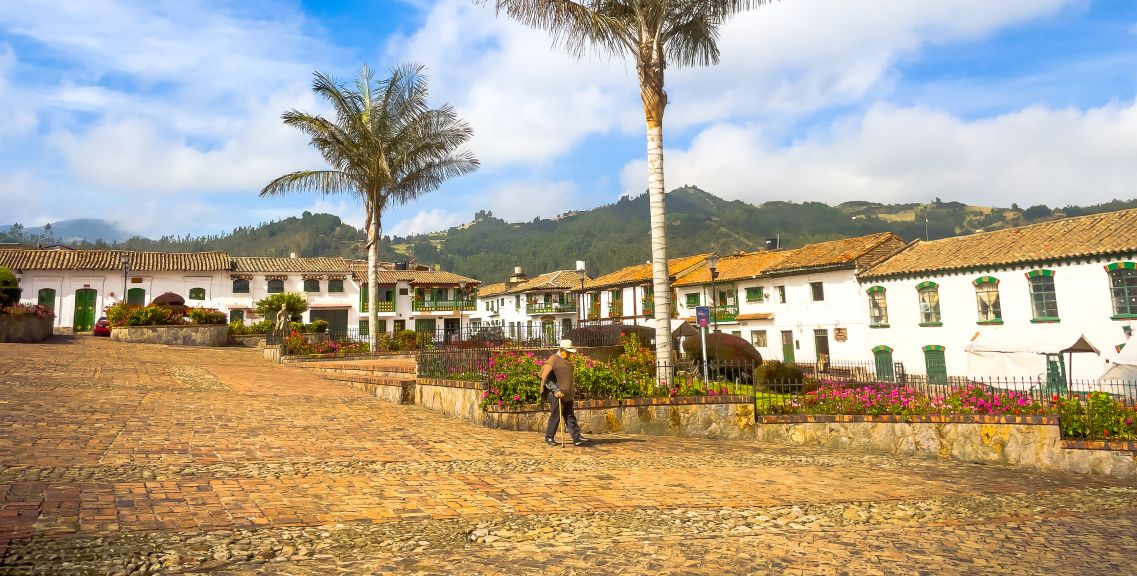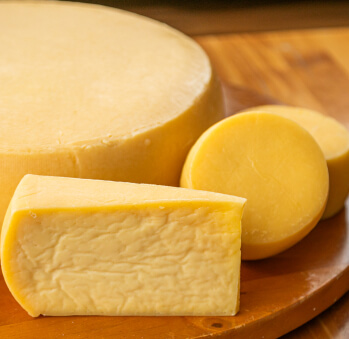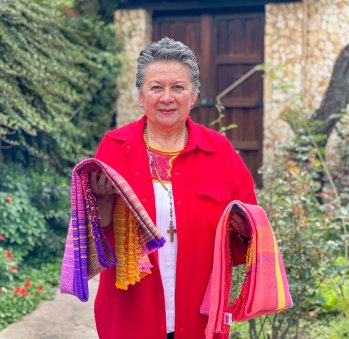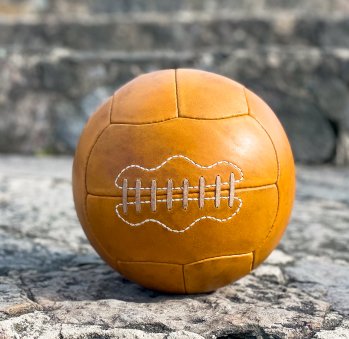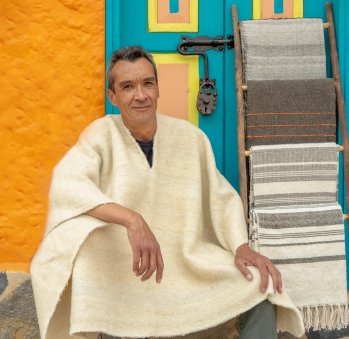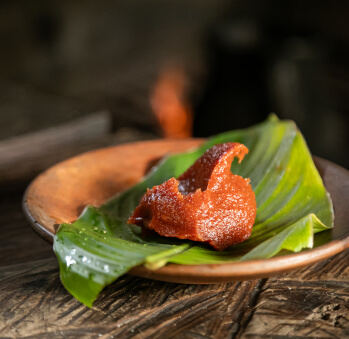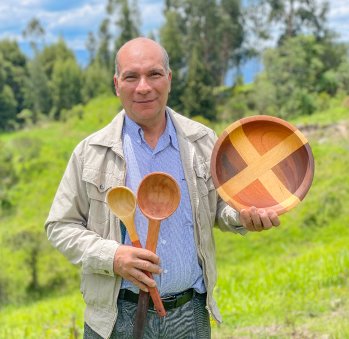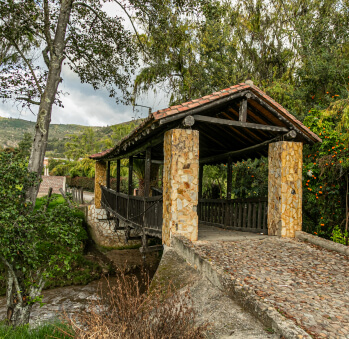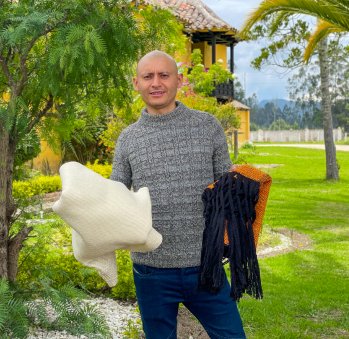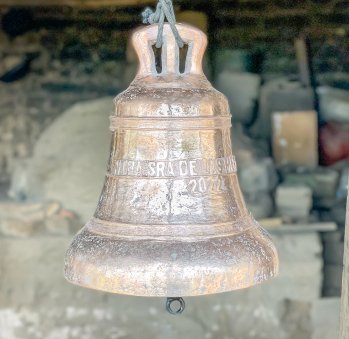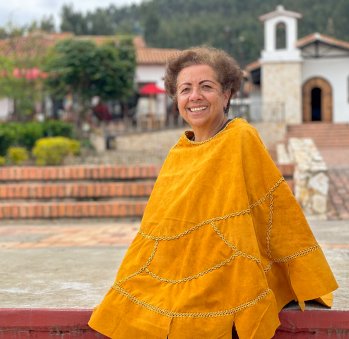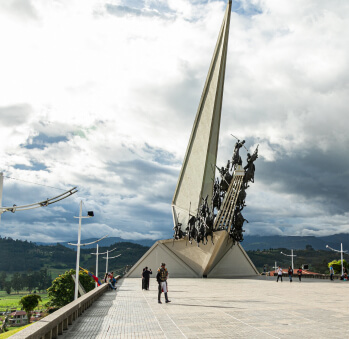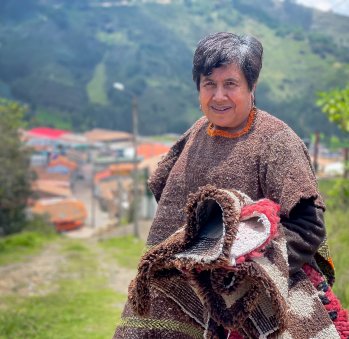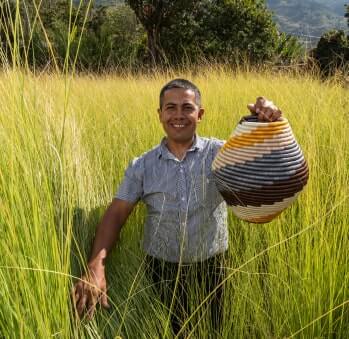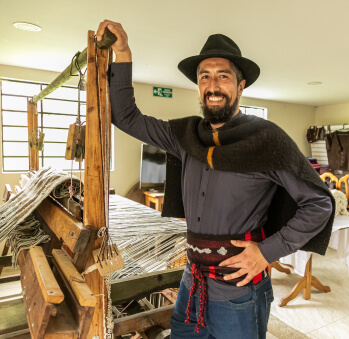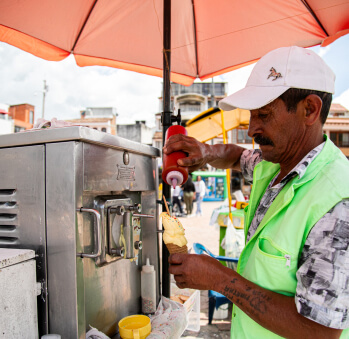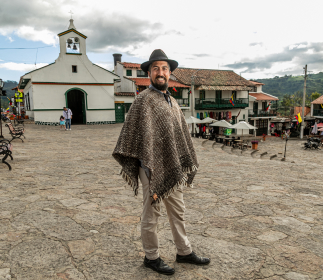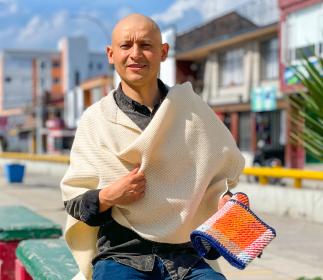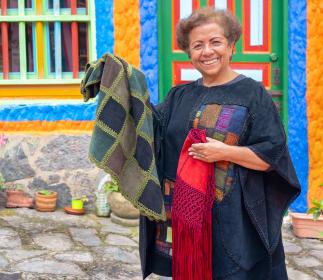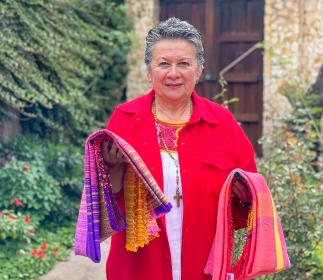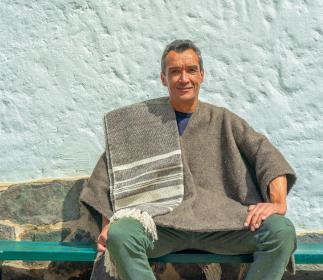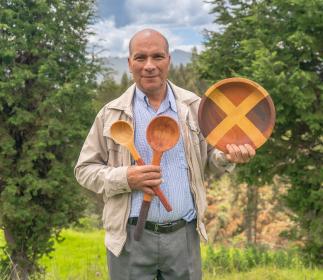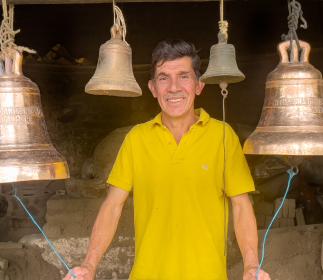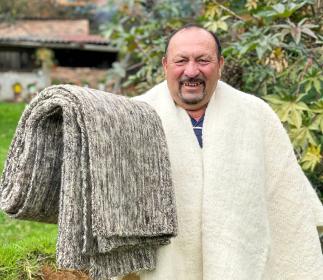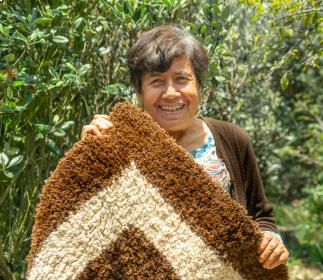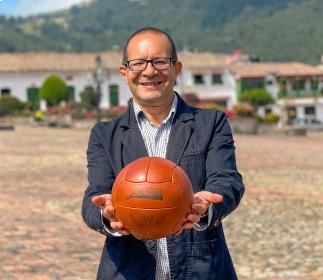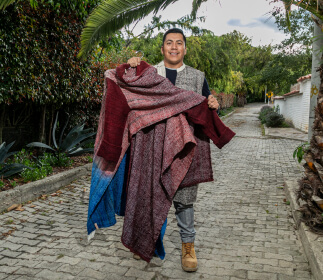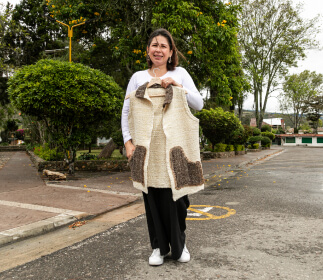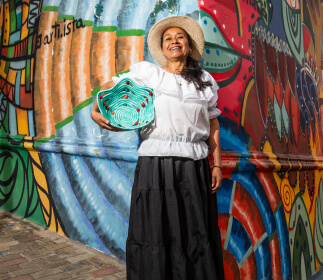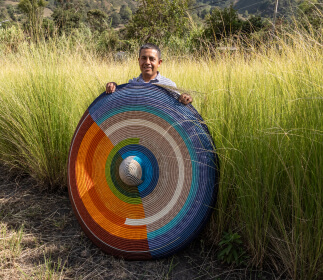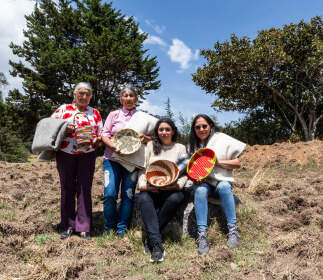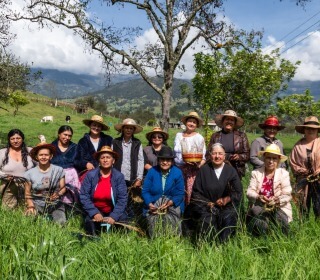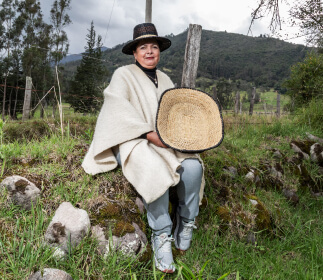Ruta Paipa – Iza y Paipa – Guacamayas
Volver a la ruta principalSi te decides a tomar la vía Tunja-Paipa-Duitama-Nobsa-Monguí, que llamamos acá la ruta Provincia de Tundama (una de las 15 provincias del departamento de Boyacá y cuya capital es Duitama), descubrirás un universo artesanal y paisajístico completamente diferente y en donde la multiplicidad de oficios es casi una regla. Su riqueza es infinita. Allí encontrarás tejedurías con distintas materias primas, talla en madera, elaboración de balones y hasta de campanas. Empaca una chaqueta porque es un poco más frío que Villa de Leyva… o mejor, ¡descubre las bondades de la ruana! Es una parte de Boyacá que parece una postal, con casonas coloniales e iglesias con muy buenos ejemplos de barroco americano. Y en Duitama está el pueblito boyacense, una recreación en miniatura de varias plazas y monumentos boyacenses que debes conocer. La naturaleza de los oficios es tan distinta que, perfectamente podrías armar todo un circuito como el que te proponemos a continuación.
Y si decides virar en Duitama hacia el norte, tendrás la oportunidad de sorprenderte con una parte poco conocida de Boyacá, su extremo norte, hogar del Nevado del Cocuy. Podrás empezar por visitar a las tejedoras de canastos en Cerinza, un pueblo pequeño que ha surtido a por años Colombia de las cazuelas en esparto que reconocerás a primera vista. Luego continuarás subiendo entre pueblos y montañas, atravesando Belén, Páramo, Susacón, Soatá, Boavita, La Uvita y San Mateo antes de llegar a Guacamayas, en la provincia de Gutiérrez, el pueblo sorpresa que recibe con los brazo abiertos a todos los que se aventuran a llegar hasta él. Conocerás los canastos que les han merecido el sello de Denominación de Origen y cómo sus costumbres giran alrededor de su tejeduría. Habiendo llegado hasta aquí, los más aventureros estarán a un paso del Nevado del Cocuy y sus paisajes increibles.
Comienza un viaje lleno de historia
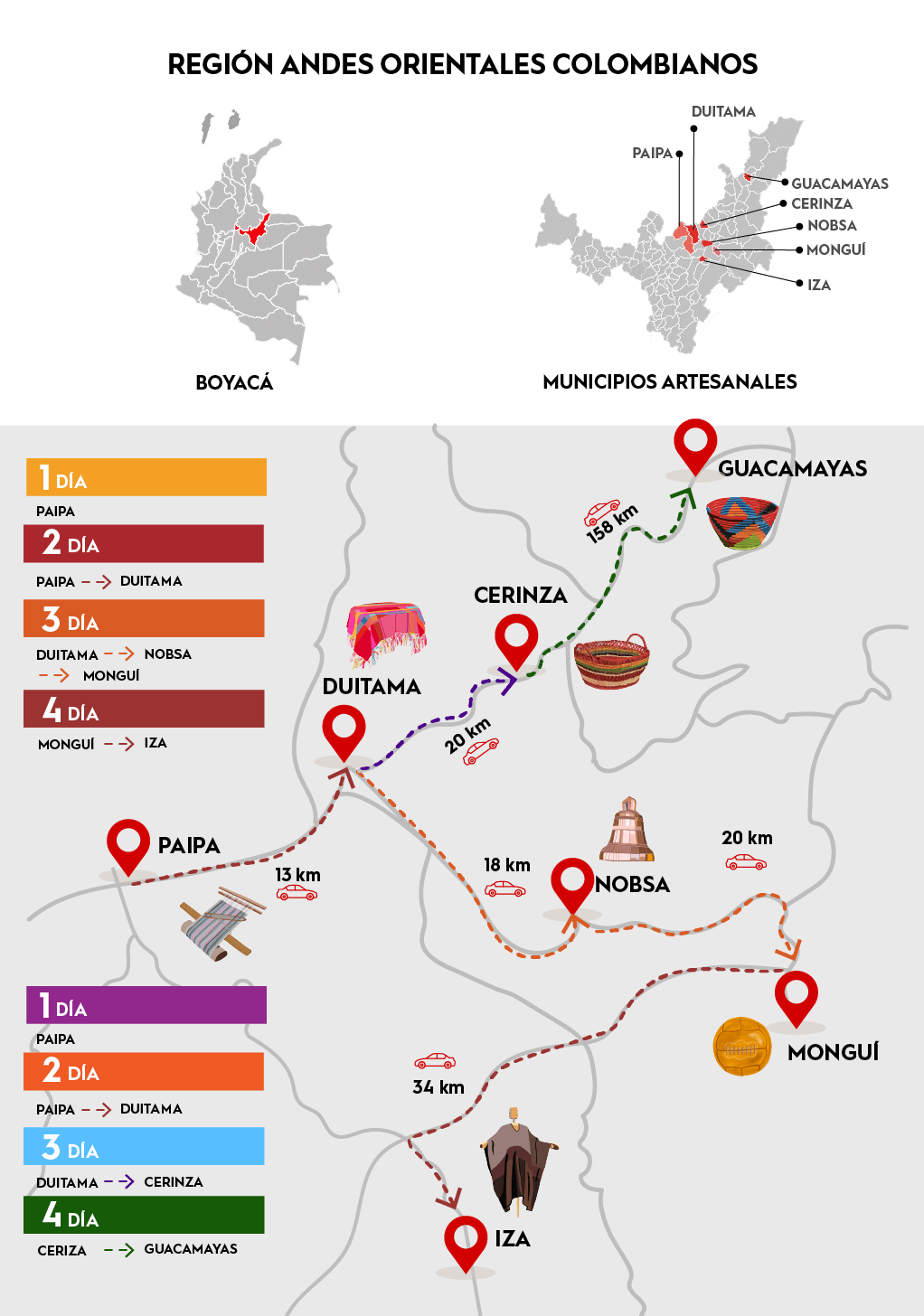
Artesanos de la ruta
Artesanos de la ruta
Te proponemos este recorrido
Agendar anticipadamente la visita con los artesanos
Llevar dinero en efectivo
4 días
Carro o bus
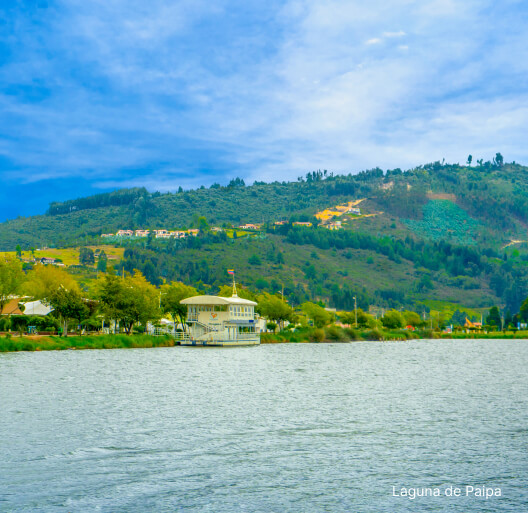
PAIPA – DUITAMA
Aquí te proponemos estar dos días, o al menos día y medio. Dependiendo de tus planes puedes decidir arrancar el día en Paipa, o terminarlo allá, pues lo cierto es que esta ciudad es famosa por sus aguas termales y son imperdibles si pasas por allí ¡no solo son deliciosamente calientes, sino que son medicinales! Además de ese plan de spa y buena gastronomía, en esta ciudad puedes ir a conocer a la familia Méndez y a Wilmer Pulido, tremendos tejedores y donde están algunas de las ruanas más lindas de Paipa. Luego, sigue tu viaje hacia Duitama, a solo 13 kms de distancia. Puedes pasar allí todo un día, conociendo a sus artesanos y yendo no solo a sus talleres, donde conocerás de tejido en lana, croché y cuero, así como de talla en madera, sino entrando al colorido Pueblito Boyacense, insignia de este departamento, en donde verás, en una escala más pequeña, la famosa Plaza de Villa de Leyva o réplicas de esculturas en barro de Ráquira, así como fachadas de algunas de sus iglesias y una versión del icónico monumento a Los Lanceros del Pantano de Vargas, de Rodrigo Arenas Betancur. Su ingreso tiene un costo, pero puedes parquear fácilmente y comer todas las delicias boyacenses; es un lugar pintoresco que merece la pena ser visitado para sentir la riqueza artesanal del departamento.
DUITAMA – PUNTA LARGA
A 8 kms de Duitama, Punta Larga es otro de esos parajes obligados en cualquier paseo boyacense pues el paisaje de su entorno es excepcional. En este lugar puedes conocer a los maestros talladores de los muebles coloniales que verás en todo el departamento, en sus hoteles, restaurantes y casonas más tradicionales. Allí mismo te invitamos a que descubras el viñedo del Marqués de Punta Larga, un símbolo de la región y la garantía de un muy buen tiempo, comiendo rico y tomando una variedad de vinos muy suaves. Aprovecha esta inmersión artesanal para fijarte en la arquitectura de esta región y esa herencia española que allí se siente tan presente.
PUNTA LARGA – NOBSA – MONGUÍ
Sigue a Nobsa, a solo 9 kms de distancia, y descubre en este pueblo lindísimo, la cuna de la ruana. Verás la importancia de la lana de oveja y cómo en cada casa se teje. Y ya estando allá, te invitamos a hacer uno de los mayores descubrimientos de este departamento: ver cómo se fabrican las campanas de la mano de la familia que más experticia tiene en este oficio, una herencia de siglos dedicados a este arte. Dedícale tiempo a los artesanos maravillosos que te recomendamos conocer. Puedes dormir cómodamente en este pueblo o irte para Monguí, de donde estás a unos 40 minutos (20 kms). Éste es uno de los pueblos más bellos de Boyacá y merece que lo visites al menos un día completo. La que fuera una importante jefatura muisca antes de la colonización, se convirtió luego en un importante centro de evangelización católica por lo cual su iglesia, Nuestra Señora de Monguí, es monumental y hermosa. Los monguiseños son devotos a Nuestra Señora de la Concepción a quien se le atribuyen diversos milagros, por lo cual la romería es algo que mantiene el pueblo activo. Pero no solo hay culto religioso, pues es una tierra consagrada a los balones cosidos que le crearon una férrea identidad a Monguí.
Disfruta viéndolos colgar en las calles y mira a las mujeres tejedoras elaborando parte de su proceso. Visita a nuestro artesano recomendado para que entiendas la importancia de este oficio. También, de aquí son oriundas las famosas gualdrapas de lana, los coloridos tapetes abullonados que verás en toda casona boyacense.
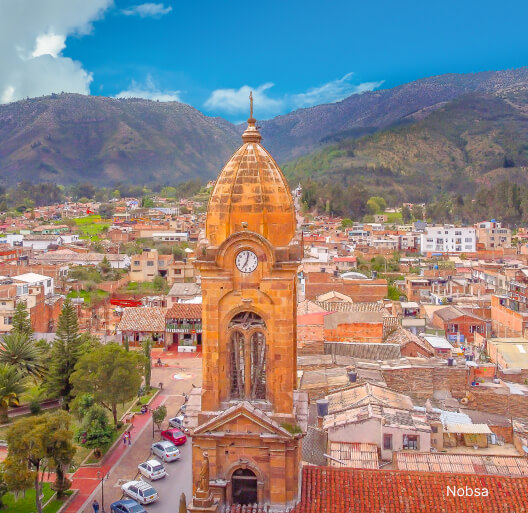
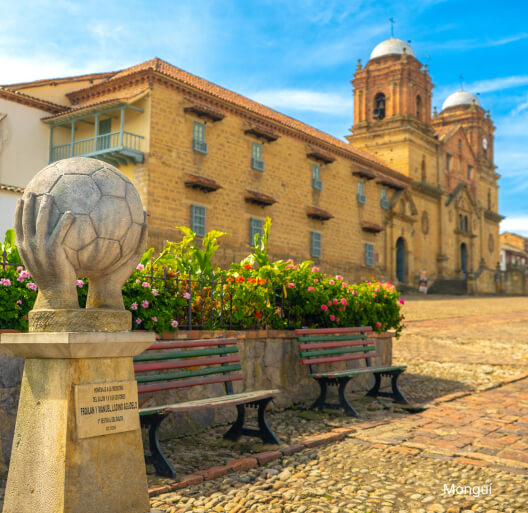
PUNTA LARGA - TIBASOSA – IZA - TOTA
En Punta Larga tendrás que tomar una decisión: o sigues para Monguí o te vas hacia Iza. En este último caso, déjate tentar por el olor de la exquisita feijoa, insignia de los pueblos de Tibasosa (a 8 kms) e Iza (a 25 kms) y, coronar con una visita a la hermosísima Laguna de Tota (a 36 kms), tremenda mancha de agua azulada. A Iza, como te darás cuenta con los artesanos que queremos que conozcas y que honran a una tierra de enorme tradición tejedora, se le conoce como “el Nido Verde de Boyacá”, es patrimonio cultural del país, gracias a sus muchas riquezas tanto históricas como naturales (¡allí también hay termales, las de Pozo Verde!) y culinarias. Su escala preciosa, en donde todo parece contenido, lo hace ser uno de los 7 pueblos pesebre de Colombia. En cuanto a su patrimonio arquitectónico, visita el Templo del Divino Salvador de la Piedra de Iza, construido en adobe en 1678. Caminando, te encontrarás con un tronco de pino ciprés con la efigie de un izano ilustre. Se trata de Francisco Cristancho, compositor del famoso “Torbellino de mi tierra” (además, ese pino es, en sí mismo, una joya, pues fue sembrado ¡por la Comisión Corográfica en 1850!). En este pueblo bello, te encontrarás con murales y monumentos por doquier y muy buena oferta tanto restaurantes (la trucha es imperdible) como de hoteles, cabañas y glamping. Y si eres de los que les gusta el ecoturismo, prepárate para pedalear y caminar.
CERINZA-GUACAMAYAS
Te podrás alojar en Duitama y madrugar al primer destino, Cerinza, a tan solo media hora. Te recomendamos empezar el día temprano para poder presenciar cómo, a medida que el aire se calienta y el rocío se evapora, se despeja el paisaje y aparecen, de entre la neblina, el verde de los potreros y el imponente cerro del Tíbet, que acompañará omnipresente tu estadía. Tendrás dos tipos de experiencia, una de pueblo y otra de campo, de la mano de dos grupos de artesanas del esparto. Con Nelcy, un abrebocas de lo que es la vida aquí, tejiendo los canastos, individuales y cazuelas que de seguro ya habías conocido, pues son comunes en las mesas cundiboyacenses para servir picadas, empanadas y ajiaco. Y con las artesanas de ADAUC, déjate contagiar de la rutina de las veredas, donde las mujeres barajan la tejeduría en esparto con el cuidado del ganado y los cultivos ¡Aprovecha para agendar un almuerzo criollo con ellas!
En la tarde, te proponemos visitar la Iglesia gótica de la Inmaculada Concepción y la Capilla colonial de Santa Lucía, o dos opciones campestres, ir al Club Deportivo El Paraíso, una finca en la vereda Novare con ambiente familiar donde podrás probar tu talento en el tiro al arco o el paintball, o subir al Cerro de las Cruces para tener una panorámica de Cerinza. Y si quieres conocer mejor sus montañas, extiende tu visita un día para subir a la Laguna Careperro. La travesía se hace a pie y la recompensa será llegar a sus aguas rodeadas de frailejones y nubes de páramo.
A casi cinco horas de Cerinza, en el puro norte de Boyacá, está Guacamayas. Tómate el viaje con calma y aprovecha para conocer los pueblos del camino: Belén, con sus calles en damero y plaza de palmeras gigantes, Susacón, con su mirador del Cañón del Chicamocha en el Alto Cruz de Mayo, Soatá, con sus Murales de la calle del comercio y atractivos naturales, La Uvita, con sus cerros, y San Mateo, con su patrimonio histórico de La Casa Redonda.
Llegar hasta Guacamayas habrá valido la pena. Se te revelará entre las curvas del camino, y de ahí su apodo: pueblo sorpresa. Ya que queda en la ladera de una montaña, dicen que tiene todos los climas, ¡y es cierto! El pueblo es de clima cálido, como su gente, y si subes por la montaña, poco a poco necesitarás abrigarte. Verás gran variedad de cultivos de caña, café, papa y maíz en las veredas, y en el pueblo encontrarás un ambiente limpio y colorido, ideal para que florezcan las orquídeas que lo colman. Visita el sendero Los Moros, la parroquia San Diego Alcalá, y los Parques Ecológicos de San Diego o del Reciclaje.
Puedes pasar la tarde paseando por sus calles o por el Sendero de las Orquídeas, y probando una de las delicias locales, la sopa de chorotas. Al día siguiente, adéntrate de lleno en la artesanía que le valió a Guacamayas su Denominación de Orígen, de la mano de Omaira Manrique, una líder incansable, y de Francisco Silva, merecedor de la Medalla a la Maestría Artesanal Contemporánea, así como de las integrantes de ASOARTESGUA. Descubrirás el valor de su delicada técnica y la historia detrás de este legado de sus ancestros Lache.
El plus de este viaje será tener la posibilidad de visitar el Nevado del Cocuy, un paisaje sin igual y territorio sagrado para los indígenas U’Wa. Estando en Guacamayas, solo te queda media hora de viaje para llegar al pueblo de Cocuy, patrimonio arquitectónico de Boyacá, o Güicán. En ambos, podrás tramitar los seguros y permisos necesarios para tu visita, y encontrarás una amplia oferta de cabañas y posadas en donde quedarte antes de emprender tu aventura de alta montaña dentro del Parque Nacional Natural El Cocuy. De bajada podrás pasar por las termales de La Salinita en El Espino, o de San Luis en Güicán, para un merecido descanso.
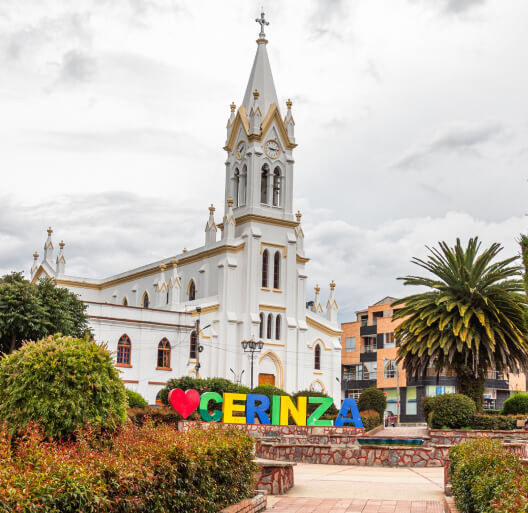
Reconocimientos de la ruta
Sitios recomendados
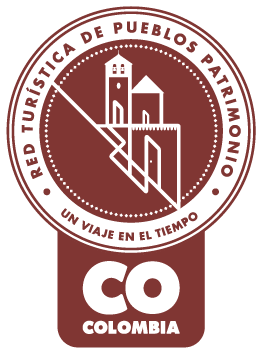
Pueblo Patrimonio
La Red Turística de Pueblos Patrimonio de Colombia es un programa especial del Ministerio de Comercio, Industria y Turismo, ejecutado por FONTUR, que trabaja con 17 municipios de Colombia que poseen declaratoria de Bien de Interés Cultural (BIC) a nivel nacional para su valoración y proyección mediante el turismo, generando así más oportunidades de desarrollo y sostenibilidad en las comunidades.
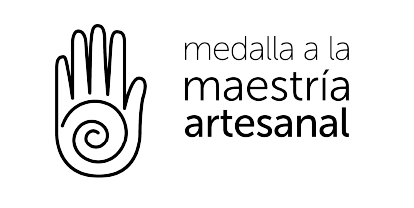
La Medalla a la Maestría Artesanal es un galardón que Artesanías de Colombia entrega anualmente, con el cual se hace un reconocimiento a aquellos artesanos, empresas y comunidades artesanales que, contando con una trayectoria destacada, sobresalen a nivel nacional por su excelencia en el oficio así como por preservar el quehacer artesanal.

Denominación de Origen
Es un signo distintivo que identifica productos reconocidos o famosos por tener una calidad o características específicas derivadas esencialmente del lugar de origen y la forma tradicional de extracción, elaboración y producción por parte de sus habitantes. La protección conferida sobre una Denominación de Origen implica que ninguna persona puede identificar con la denominación protegida productos iguales o similares a los amparados, cuando no provengan del verdadero lugar y no cumplan con las características o calidades que le han dado la reputación al producto reconocido. Las Denominaciones de Origen para productos artesanales colombianos que han sido protegidas por la Superintendencia de Industria y Comercio en nuestro país son actualmente 12.
No puede copiar contenido de esta página

